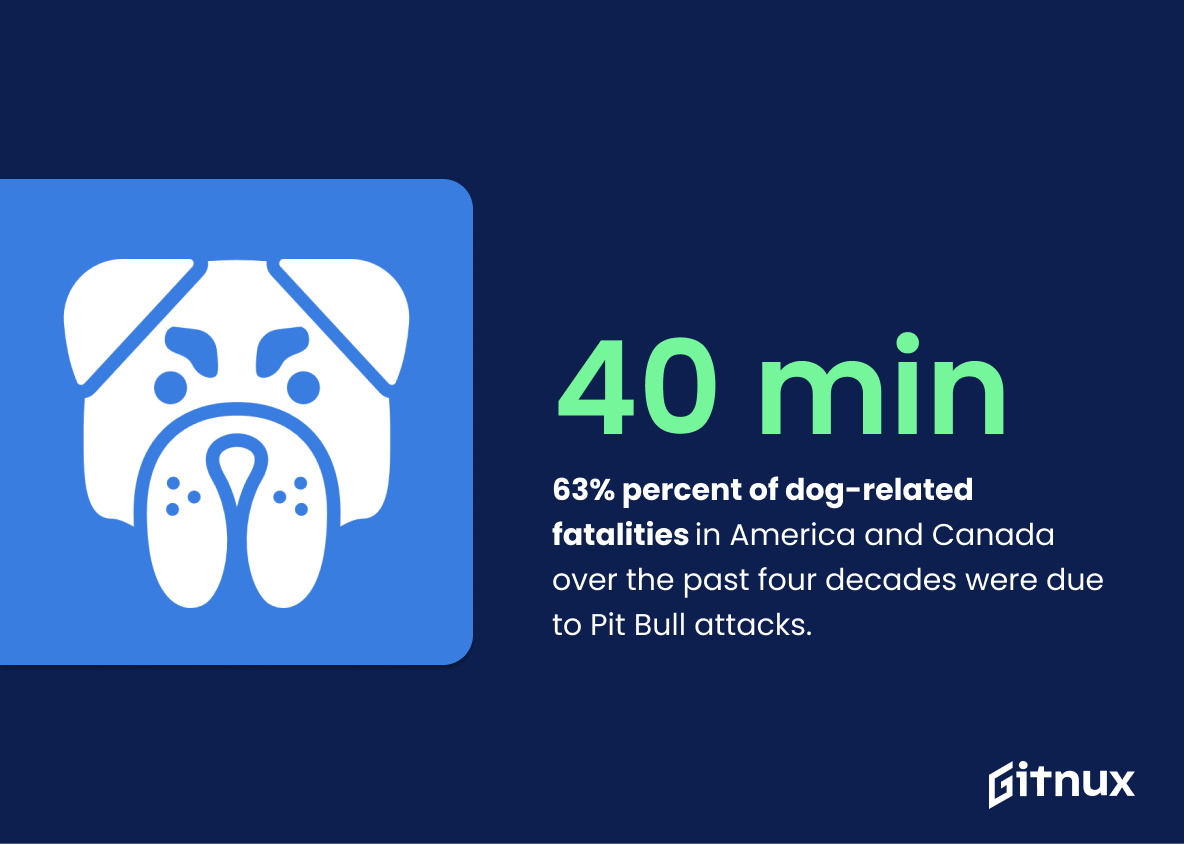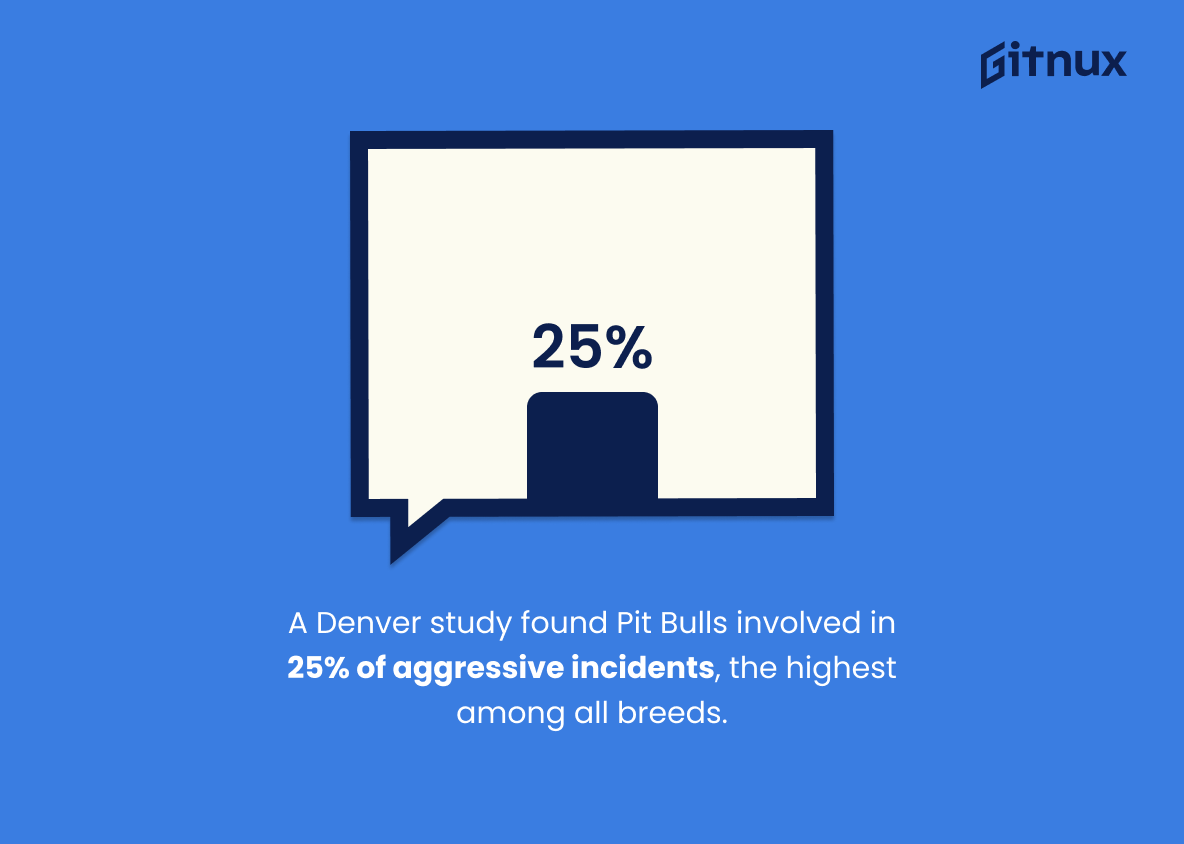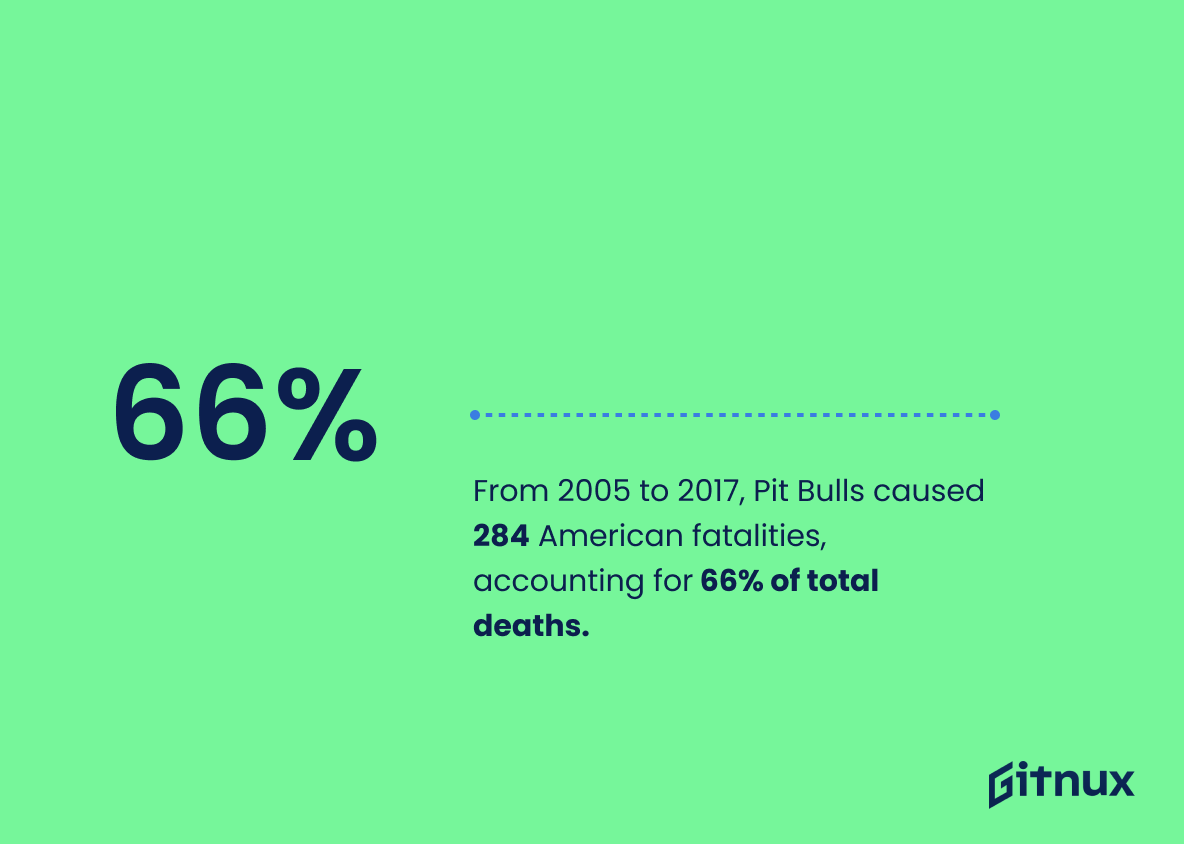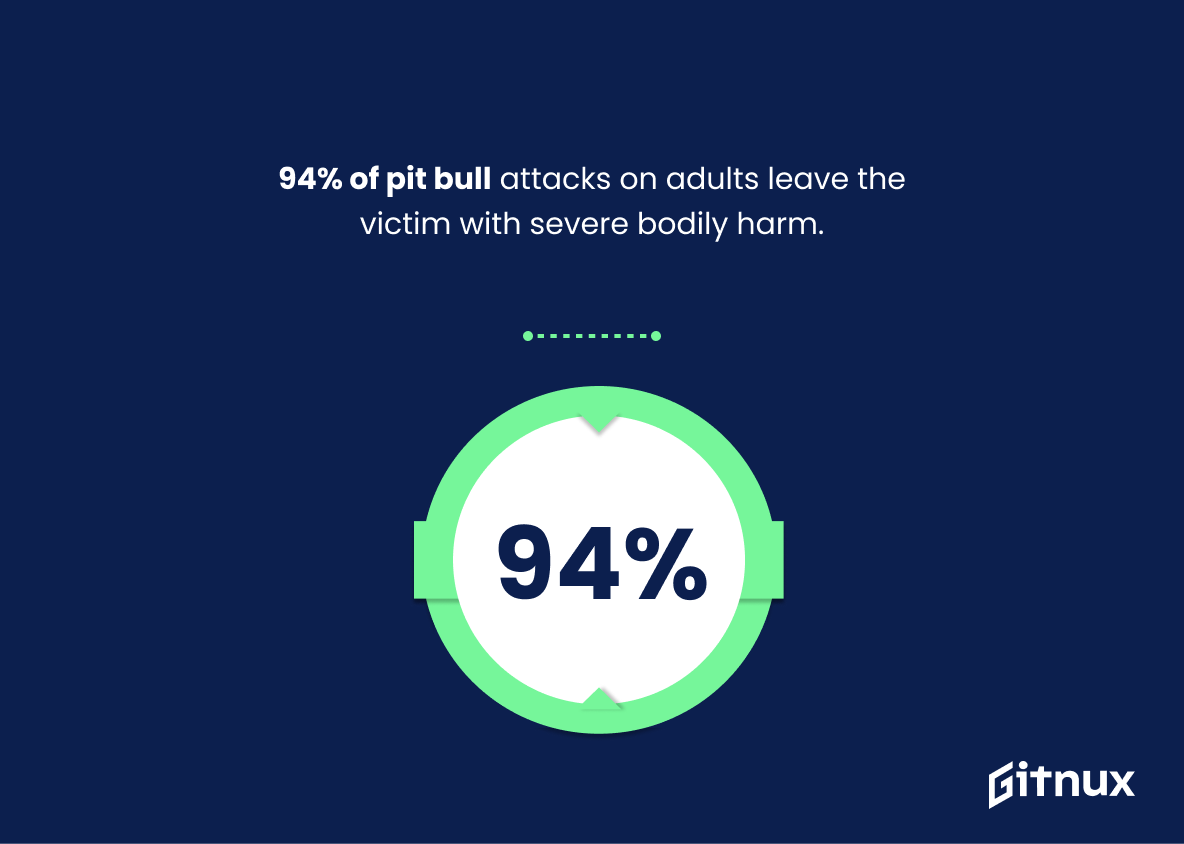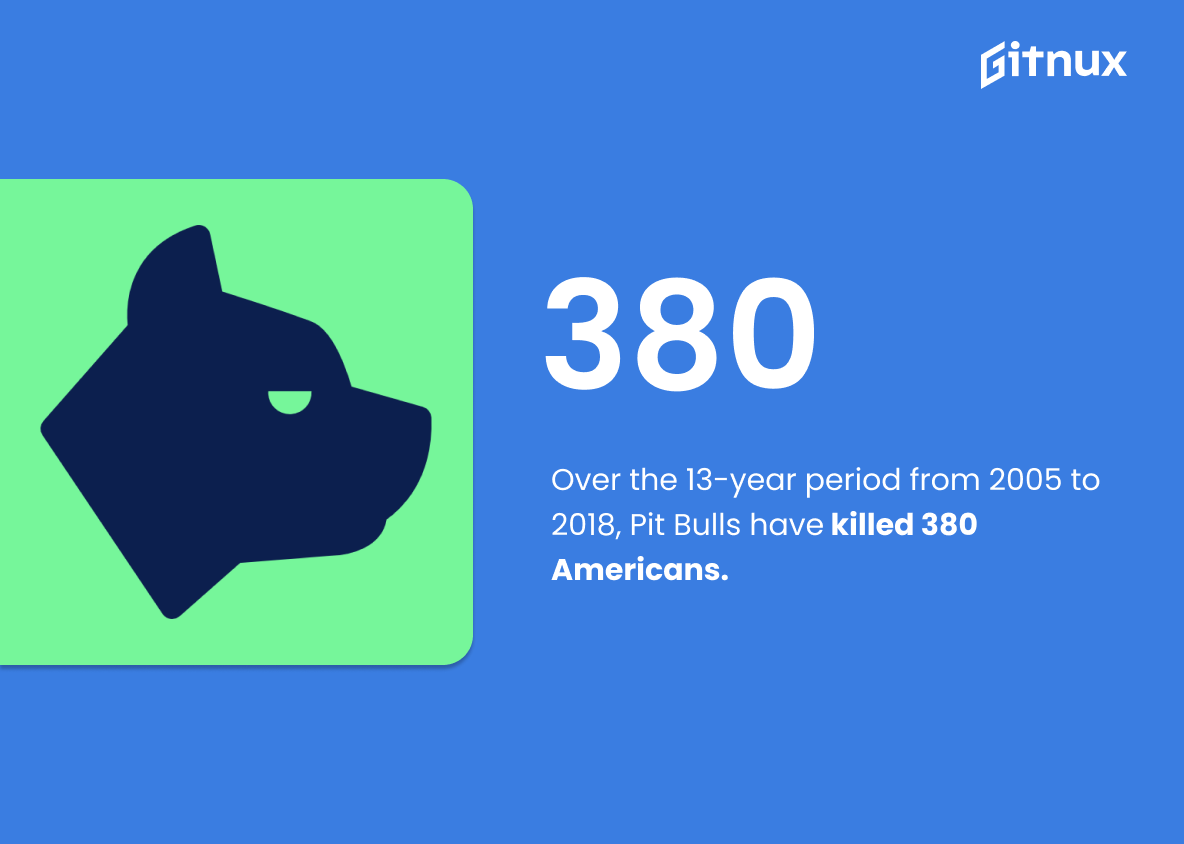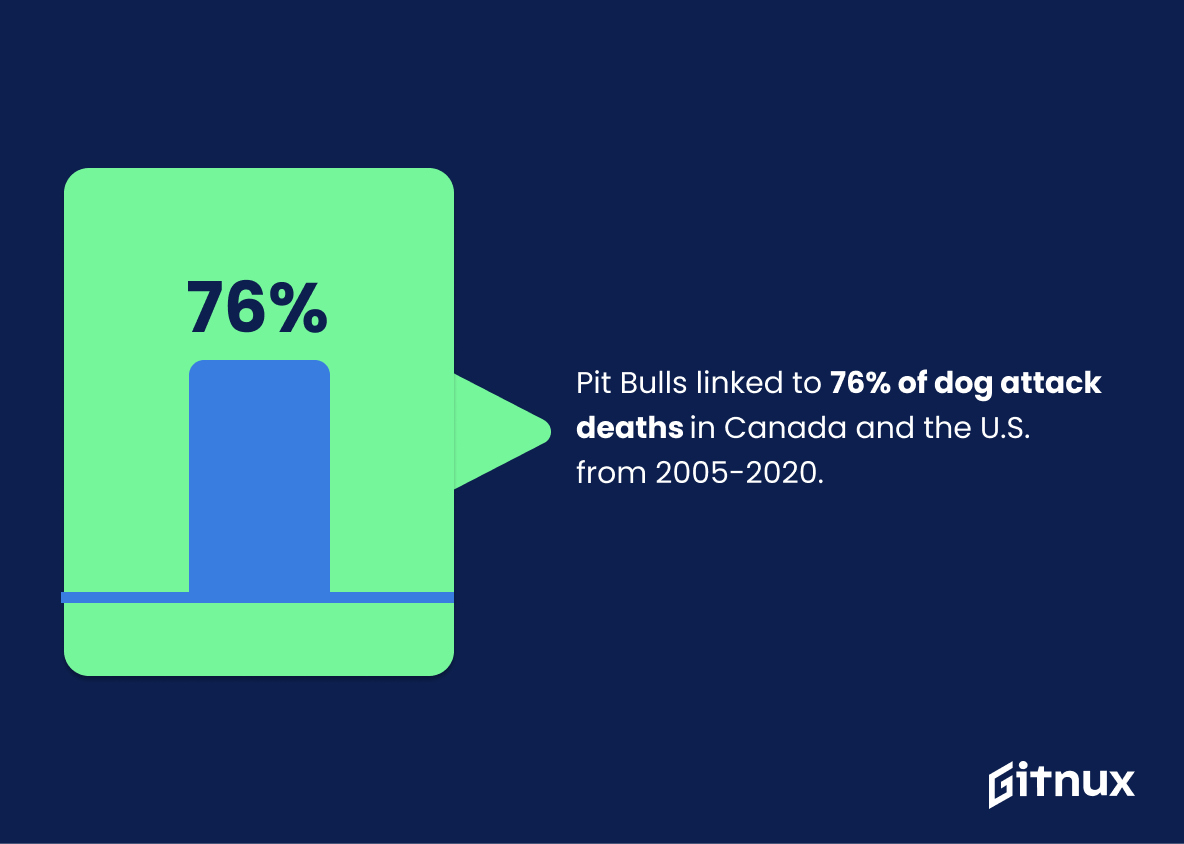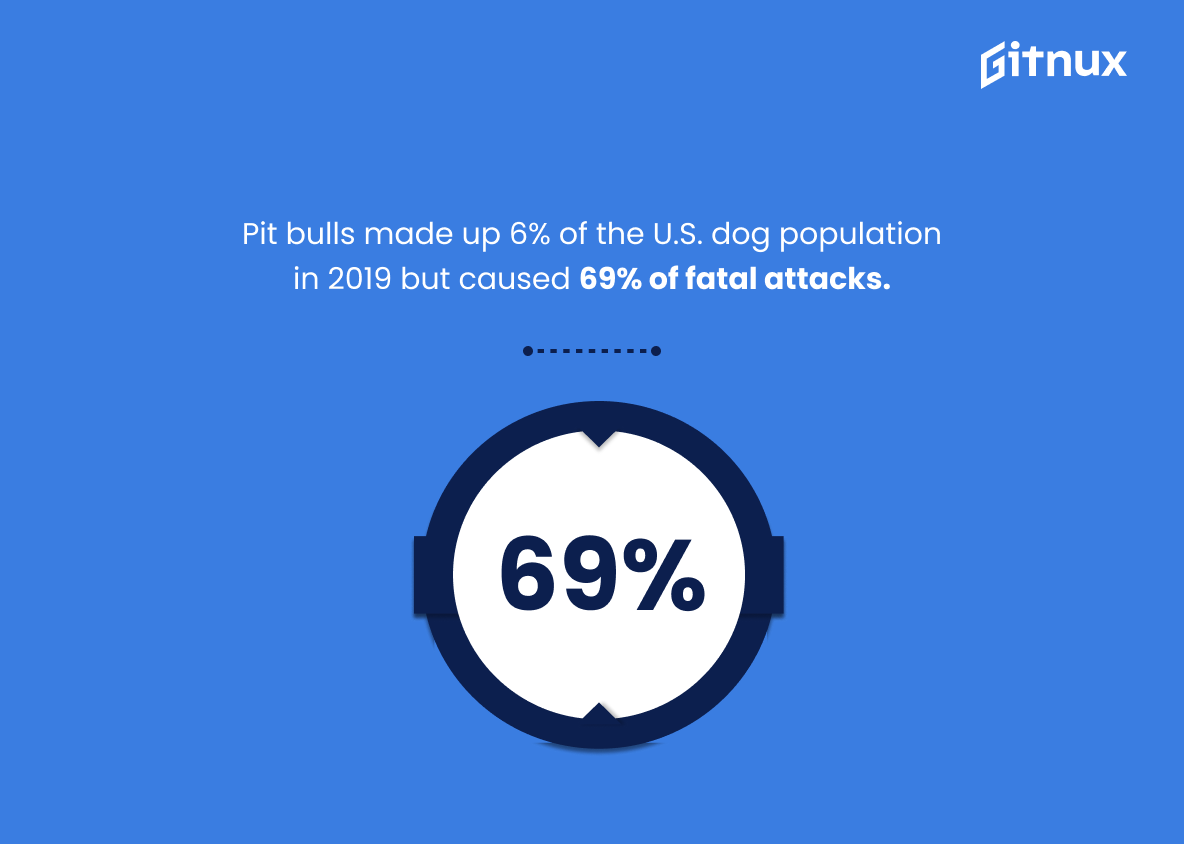The public perception of Pitbulls is often plagued by controversy and misunderstanding. Whether heralded as loyal companions or vilified as dangerous monsters, these breeds undeniably evoke strong emotions. This blog post intends to dispel conjecture and replace it with hard facts and concrete data. We will delve into Pitbull attack statistics, offering a balanced, in-depth examination of the numbers behind the headlines. Readers will gain a clearer picture of this misunderstood breed, enabling them to make informed opinions grounded in objective reality. Join us as we unravel this hotly debated topic, one fact at a time.
The Latest Pitbull Attack Statistics Unveiled
63% percent of dog-related fatalities in America and Canada over the past four decades were due to Pit Bull attacks.
This vivid figure — 63% of dog-related fatalities in America and Canada over the past 40 years tied to Pit Bull attacks — serves as a compelling centerpiece in the broader conversation about Pitbull Attack Statistics. Not only does it illuminate the significant role that this specific breed plays in serious dog-related incidents, but it also underscores the pressing need for preventive measures and responsible ownership. As you navigate through the debates and discussions within this blog post, this statistic stands as a constant, sobering reminder of the potential consequences in the absence of informed intervention and action.
A study in Denver found that approximately 25% of all aggressive incidents involved the Pit Bull breed, more than any other breed.
Delving into the dynamics of dog attack statistics, the mention of Pit Bulls representing a significant 25% of aggressive incidents in Denver serves as a key indicator. This communicates a potent truth about their correlation with aggressive behavior, a sentiment that surpasses all other breeds under consideration. Such robust data enhances credibility whilst fortifying the post’s central narrative. Furthermore, it paints a stark, empirical picture that enables readers to grasp the magnitude of the issue at hand, stirring up critical dialogue on dog behavior and breed-specific aggression.
From 2005 to 2017, 284 Americans were killed by Pit Bulls, representing 66% of total fatalities.
The impactful revelation that, between 2005 and 2017, Pit Bulls stirred the demise of 284 Americans, which translates to a substantial 66% of total fatalities, provides an invaluable perspective in our exploration of Pitbull attack metrics. Its significance looms large, acting as the pulsating heart of our discourse, the crucial thread weaving through the intricate tapestry of our Pitbull centered narrative. This statistic unearths a chilling reality about Pitbull attacks, shedding light upon the breed’s unfortunate association with fatal encounters, thus commanding our attention and shaping the ensuing discussion on canine aggression and breed-specific tendencies.
Pit Bulls were responsible for more than 50% of all reported dog attacks on other animals (77,000-155,000) in 2015.
Highlighting the fact that Pit Bulls were accountable for more than half the total reported dog attacks on other animals within the year 2015, has a jarring yet compelling effect. Such a statistic shakes up the reader’s perception and forces them to question any preconceived notions they might harbor concerning Pit Bulls. In a blog on Pitbull Attack Statistics, this unsettling data breathes life into the discourse, stirring conversation, challenging stereotypes, and underscoring the significance of raising awareness about the breed’s behavioral traits and proper management. It helps to lay the groundwork for the dialogue on responsible pet ownership, canine training and socialization, as well as public safety.
94% of pit bull attacks on adults leave the victim with severe bodily harm.
The potency of this statistic, that 94% of pit bull attacks on adults leave the victim with severe bodily harm, underpins the crux of our discussion on Pitbull Attack Statistics. It not only signifies the gravity of such incidents but also vividly paints a picture of the potential danger involved. Taking this statistic as the linchpin, it provides compelling evidence to substantiate the narrative of the blog post, and effectively emphasizes the urgency of the topic for public awareness and preventive measures.
Over the 13-year period from 2005 to 2018, Pit Bulls have killed 380 Americans.
Putting these figures under the lens provides a stark perspective on the danger that Pit Bulls might pose in the U.S. Isolating the time-frame from 2005 to 2018 casts a spotlight on the significant number of fatalities involved, totalling at a frightening 380 American lives taken. This figure plays a critical role in our analysis, serving as a disquieting reminder of the potential risk and lethal outcomes of Pit Bull attacks. This data point weaves a vivid narrative, directing the dialogue to the deep-seated concerns surrounding Pit Bull breeds and igniting critical discussions on responsible pet ownership, breeding regulations, and safety protocols.
A figure of 38 fatalities was attributed to Pit Bull attacks on children aged 7 years and less between 2005 and 2008.
In exploring facts behind Pit Bull Attacks, this chilling fact of 38 fatalities involving children of 7 years and under between 2005 and 2008 provides a poignant emphasis. It showcases the potential severity of these interactions and compels heightening caution around Pit Bulls and children. This particular statistic helps us cut through common misconceptions and compels us to focus on how to minimize potential risks, thus underscoring the blog post’s relevance and urgency.
In 2019, Pit Bulls attributed to 69% (33) of dog bite fatalities in the US.
Highlighting a figure as stark as this underscores the prevalent concern regarding Pit Bull attacks in the U.S. Indeed, this data serves as the marrow of our blog post: it confronts the reader with the gnawing reality that in 2019, Pit Bulls were responsible for a staggering 69% of dog bite fatalities. Aside from simply pointing out this prevalence, this concrete figure draws attention to the overarching narrative about the potential danger associated with Pit Bulls, accentuating the need for a deeper understanding of their behavioral patterns and an increased focus on breed-specific training and socialization.
Between 2005 and 2020, Pit Bulls were linked to 76% of all deaths caused by dog attacks in Canada and the U.S.
Painting with numbers, one might appreciate the gravity contained within the detail that “Between 2005 and 2020, Pit Bulls were linked to 76% of all deaths caused by dog attacks in Canada and the U.S.” In a blog post dissecting Pitbull Attack Statistics, this chilling fraction provides a potent perspective on matters of public safety and responsible pet ownership. It highlights the role of specific breeds in severe incidents and invites readers to probe deeper into factors like canine temperament, breeding history, and owner accountability in mitigating risks. This statistic is akin to a lit bulb in a room of shadowy understanding – hard to ignore, urging scrutiny and heralding the potential for informed discourse and action.
Pit bulls constituted about 6% of the total U.S. dog population in 2019, yet were responsible for 69% of reported fatal attacks.
This riveting statistic certainly gives all readers pause, exhibiting a highly disproportionate correlation between the population size of pit bulls and reported fatalities from attacks. Significantly, pit bulls, while making up a slender fragment of 6% in the entire U.S. canine populace in 2019, were implicated in a shocking 69% of fatal encounters. This startling contrast paints an incisive picture for anyone delving into pitbull attack statistics, underlining a pressing need to explore factors like the breeding, upbringing, and environment of these dogs that could attribute to this heightened level of aggression. Observation of such statistics can lead to enlightened discussions about responsible dog ownership and reforms in legislation related to dog breeding and control.
Conclusion
To sum it all up, pitbull attack statistics can be alarming, but it’s vital to remember that each dog’s behavior is highly influenced by its upbringing, environment, and training. An understanding of these statistics is not meant to breed fear or stigma, but to emphasize the importance of responsible pet ownership. A Pitbull or any dog breed, regardless of the perceived ferocity, should be nurtured with love, proper care and appropriate training to ensure a harmonious relationship between the pet and its human companions. Hence, it is crucial that we foster a society that is knowledgeable about dogs and promotes safety precautions rather than resort to breed discrimination. Ultimately, it’s not the breed that’s the issue, but how they are raised and treated.
References
0. – https://www.www.ncbi.nlm.nih.gov
1. – https://www.www.dogsbite.org
2. – https://www.www.animals24-7.org
